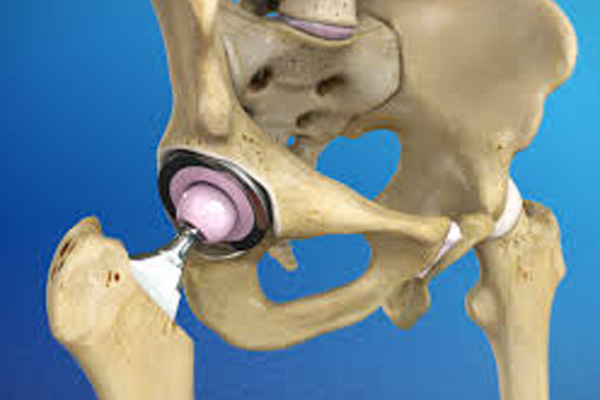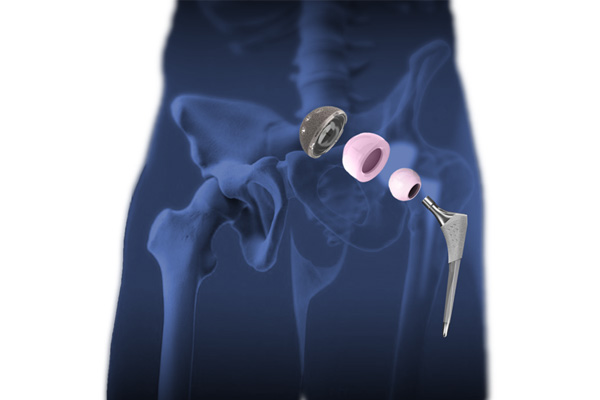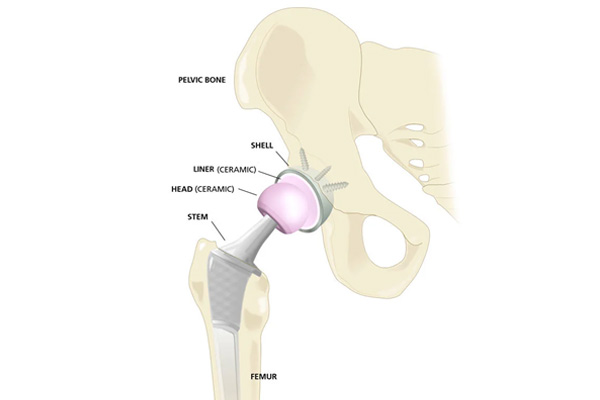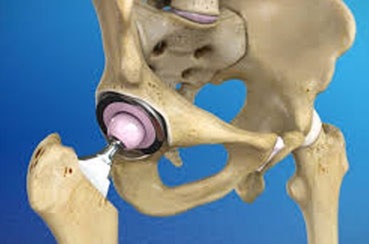Are you or a loved one dealing with chronic hip pain that’s affecting your quality of life? Tired of living with limited mobility, stiffness, or the fear of long-term joint damage? Ceramic hip replacement might just be the modern solution you’ve been searching for.
Dr. Supreet Bajwa, a Fellowship-Trained Hip & Knee Orthopaedic Surgeon, brings global expertise from India and Australia in advanced joint replacement. He specializes in minimally invasive, robotic, and ceramic hip replacements, helping patients return to normal life faster and with better long-term outcomes. Wondering if a ceramic hip implant is really better than traditional metal or plastic ones? Is it truly worth the higher cost?
With modern advancements in joint replacement, ceramic hip replacement has become a preferred choice for many patients–especially younger, active individuals who want a durable, low-wear solution. But just like any big health decision, it’s important to understand the benefits, risks, and long-term value before choosing ceramic implants.

What Is a Ceramic Hip Replacement?
A ceramic hip replacement uses a ceramic-on-ceramic or ceramic-on-polyethylene bearing surface instead of traditional metal or plastic combinations. Ceramic materials are biocompatible, extremely smooth, and resistant to wear.
Why Patients Are Considering Ceramic Implants
Ceramic hip implants are increasingly chosen by patients in their 40s, 50s, and 60s who want a joint replacement that can last 20–30 years without complications. The low wear rate of ceramic components makes them ideal for longer functional life.
What Are the Components of a Hip Implant?
A total hip replacement consists of four key components:
- Acetabular Shell (metal shell fixed to the pelvic bone)
- Liner (plastic or ceramic insert inside the shell)
- Femoral Stem (metal stem placed inside the thigh bone)
- Femoral Head (ball that replaces the natural hip ball–often ceramic in modern implants)

How Long Does a Ceramic Hip Replacement Last?
According to global data and clinical follow-ups, ceramic hip implants can last 20–30 years, with a very low failure rate. Literature shows around 90% survival at 10 years, 80% at 20 years, and improving trends due to better implant materials.
Is Ceramic Really Better Than Metal or Plastic?
Yes. Ceramic offers:
- Lower friction and wear
- Reduced risk of inflammation and osteolysis
- Better longevity for young and active patients
What Is the Cost of Ceramic Hip Replacement in India?
The ceramic hip replacement cost in India typically ranges between INR 2.5 to 5 lakhs, depending on the hospital, surgeon, and implant brand. Advanced hospitals using US FDA-approved ceramic implants may charge slightly more.
Are Ceramic Implants Safe?
Modern ceramic implants are engineered to be fracture-resistant and safe. Earlier generations had issues with brittleness, but current designs are much more safe.

Why Is the Surgeon’s Choice So Important?
The outcome of any hip replacement depends heavily on the surgeon’s experience, implant selection, and surgical approach. A well-executed ceramic implant placement ensures better alignment and reduced wear.
How Does Wear and Tear Affect a Hip Implant?
On average, implants show 1% wear per year. With ceramic components, wear rates are significantly lower, helping your joint last longer with fewer complications.
Which Patients Benefit the Most?
- Young and active individuals
- Those with metal allergies
- People seeking long-term performance without frequent revisions
Is Ceramic Hip Replacement Covered by Insurance?
Yes. Most insurance plans in India cover ceramic hip replacement, especially when it’s medically justified. Always confirm with your insurer beforehand.
What Is the Role of Plastic Liners?
In ceramic-on-polyethylene (plastic) combinations, a plastic liner is placed inside the metal cup to support the ceramic ball. This combo gives excellent outcomes with slightly reduced cost compared to all-ceramic options.
How Is Recovery After Ceramic Hip Surgery?
Recovery timelines are similar to standard hip replacements. With minimally invasive approaches, patients walk within 6–24 hours and return to light activity within 2–3 days.
How Do I Choose the Right Ceramic Implant?
Always choose US FDA-approved implants with strong clinical history.
Do Ceramic Implants Make Noise?
In rare cases, ceramic-on-ceramic implants may produce a squeaking sound. However, newer implant designs have minimized this risk significantly.
Surgeon’s Insight on Implant Selection
As explained by leading orthopaedic surgeons in clinical webinars and YouTube sessions, the choice of implant should be tailored to your age, bone quality, and lifestyle expectations–not just cost.
- "Joint replacement is a one-time surgery in most patients. So choosing the best quality implant upfront is an investment in your lifelong mobility," says Dr. Supreet Bajwa.
- "Earlier, implants used to last 10–15 years. But now with better plastics and ceramics, we routinely see hips lasting beyond 25 years," Dr Bajwa says.
With 10+ years of experience and 1300+ successful joint replacement surgeries, Dr. Supreet Bajwa is one of the few orthopaedic surgeons in India proficient in Direct Anterior Minimally Invasive Hip Replacement, Kinematic Knee Surgery, and Cooled Radiofrequency Ablation.
He practices at:
- Wockhardt Hospital (Mumbai Central & Mira Road)
For expert consultation, call +91 9820727046 to schedule an appointment and receive world-class orthopaedic care tailored to your needs.
If you're young, active, or want a long-lasting, low-maintenance solution-ceramic hip replacement is absolutely worth the investment. While it may cost more upfront, it often saves you from needing a revision surgery later.
Always discuss your options in detail with a joint replacement specialist and choose a hospital experienced in handling advanced implants.
Want to know more? Book a consultation today to explore the best implant options for your lifestyle and joint health.


